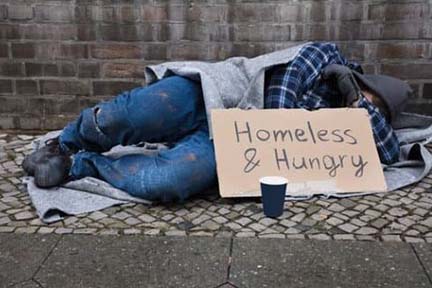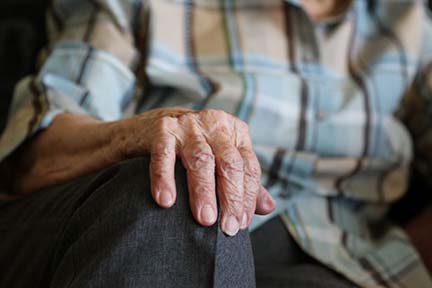Showcasing the DNR: Searching for a singular day
“I haven’t known peace and quiet for so long, I don’t remember what it’s like,” – Bob Dylan
By JOHN PEPIN
Michigan Department of Natural Resources
Sometimes, like today, when I am sitting alongside the still, clear waters of one of these north-country, freshwater lakes, I get a feeling inside.
It’s a strange sensation. I feel like at any second an ancient voice could come to me through the deafening silence, from through the trees and across the water, to whisper secrets of the universe, while at the same time, I have a feeling of loss and emptiness.
It’s as though the vastness of the sky and the universe are drawing me up with them, much the way a tornado sucks trees out of the earth, twirling them toward the heavens.
And yet, there is no wind whatsoever.
I am stirred with emotion.
I relish the time I have here alone to be enveloped in this scenery without a single other human being. Not enough time is afforded to quiet time, time to think and time to not think – time to just be.
It feels like things are flipped upside down, out of proportion.
The largest measure of my days is consumed, like most folks I would imagine, in meeting all types of diverse demands, while the time I can steal away to get outside to the piney woods, or these desolate backwater lakes and creeks, is limited.
It seems to me it should be the other way around.
Since the earliest times I can recall, I have been compelled to visit the quiet places like this. It’s a strong pulling I feel deep within me.
It is clear to me that I need to be here, but I don’t often understand exactly why.
Why do I find my most sublime peace and comfort among these gigantic boulders covered in bluish-green and cream-colored lichens? Why do the black waters, dark and unknown, mean so much?
How do the smells of the trees and the air, and the voices of the birds and animals, enchant me so? Why has it been this way since the very beginning?
It seems being among the outdoor habitats – whether boreal forests, prairies, deserts, mountains or seascapes – is a vital need that must be fulfilled for me to exist. It’s like having – or not having – water, oxygen, food or sleep.
When I am in places like this, I close my eyes to see what I can sense. There is so much here beyond sight to absorb. Even the darkness within, when I close my eyes, is fascinating to consider.
I love the taste and the smell of the rain, the feel of soft grasses and finely sorted beach sands beneath me and the sounds of bats of the evening echolocating.
I often wonder about the things I do and where I fit into the mosaic and art of nature and life. Maybe I don’t. Maybe I just hope I do.
I keep working to learn more through thinking and doing, seeing and gathering and walking and reading – always searching. I keep trying to keep the kid inside of me alive by looking at things in new ways and trying to discover new levels of understanding.
Not surprisingly, with the world so packed tight full of things to experience, I find often that I have more to learn than what I know. That helps make every day a new, and potentially better, day.
Up from this lake, there are quiet woods where no one ever seems to go much. There are promontories across this wide peninsula that few ever climb. These are the places I want to go to. It’s where I want to be.
I plan to do something I have thought about before, but never done. The reason I have never done it is likely because of the internal and external demands on me that wouldn’t allow it to happen.
Largely, my inner monologue would center around not having the time to afford this type of activity. The external demands are self-evident.
But I am determined that happen it will.
I want to go to one of these quiet, seldom-visited places. There I will sit quietly for an entire day – from before sunrise to after sunset. I will not do anything but sit, experience, observe and relax. I will open my soul to the nature around me.
I will bring a notebook in case I want to jot down some thoughts, maybe my camera, some water and something to eat, but nothing more.
I will no doubt encounter the rattling of my mind back and forth and up and down and here and there. But I think that after the mundane, internal recitation subsides there will be moments of clarity and resolve to find.
I also imagine I will see things that I wouldn’t expect. I will also be provided the opportunity to see the comings and goings of the place – everything from the winds and the light to the animals, plants and rocks – as the sun moves low across the sky.
Maybe there will be a creek or a river there to sing to me. Maybe there won’t be. Perhaps instead, there will be nothing but a splendid stand of sawtooth aspen or a jack pine barren or a green and yellow meadow.
The woods might also be dull, gray, brown and rusted. The day may be cold, warm or hot. It won’t matter. The experience will reveal itself as a genuine study in truth and beauty.
From other observations I’ve made in other places, there will likely be a timing involved for all the activities to take place. Periods of the day when the woodpeckers or the blue jays will appear, times when there won’t be any birds at all.
The deer will pass slowly, nodding their heads as they walk. Squirrels and chipmunks will make their scuffling noises in the underbrush. There might be fireflies or a morning moon to see.
There will also be the cool and darkness of the early daytime, followed by the warming of the later morning into early afternoon before the return to shadows and sinking temperatures.
I hope to understand more about these cycles. I also hope to see where I fit in or don’t. Do humans in general – and me in particular – have a true place here amid the fabric of nature or are we merely interlopers?
As I sit, I will try not to make any impact at all. No fires. No garbage. Not even footprints, if I can help it. I want to experience this quiet place to its fullest, without imposing my own presence on it.
I also want to leave it as I found it, to allow it to remain a place people hardly ever go.
Above all, I hope that I will be given to opportunity to be left alone to myself. I wouldn’t want the experience tarnished with the contrivance or interruption of the sights or sounds of humans.
I often think about the silence and vastness of the world the first peoples must have experienced here in this place. The nights were darker back then, the waters of the big lakes even colder and the skies clearer.
It must have been stunning and profound to experience.
Coming into the holiday time of year, this idea of taking an entire day to sit quietly alone amid the grandeur of nature holds even more attraction for me.
It’s going to be getting even louder and busier, more crowded, pressurized and obligatory. The Christmas music started playing in stores before Halloween.
I hope the truest and most admirable sentiments of the holidays – those of peace, love, happiness and goodwill toward each other – can prevail. But I am hoping to put my thumb on the scale a little bit by generating my own love, happiness and goodwill.
I presume that if I can find that quiet place undisturbed, where the tree bark – like the moss and the ferns – has stories to tell, and the trees can unveil a storied history untold, I will indeed find peace on earth.
At least for one single day.
Check out previous Showcasing the DNR stories in our archive at Michigan.gov/DNRStories. To subscribe to upcoming Showcasing articles, sign up for free email delivery at Michigan.gov/DNR.
Note to editors: Contact: John Pepin, Showcasing the DNR series editor, 906-226-1352. Accompanying photos and a text-only version of this story are available below for download. Caption information follows. Credit Michigan Department of Natural Resources, unless otherwise noted.
Text-only Showcasing Story – Searching for a singular day
Scene: A quiet scene, with still water and rock outcropping, is shown from the Upper Peninsula. |








